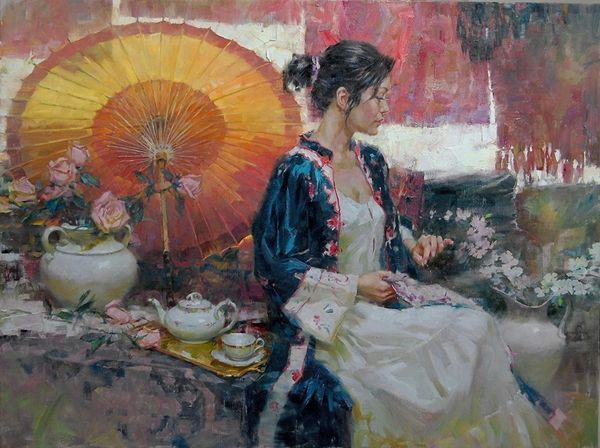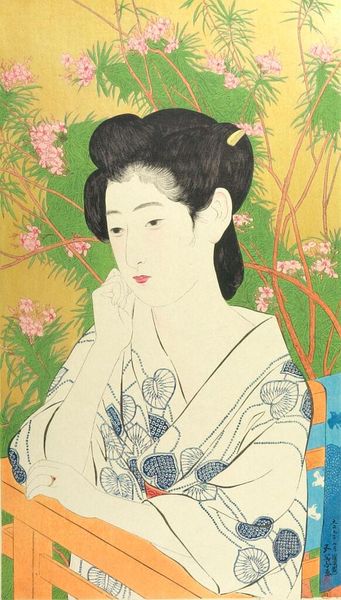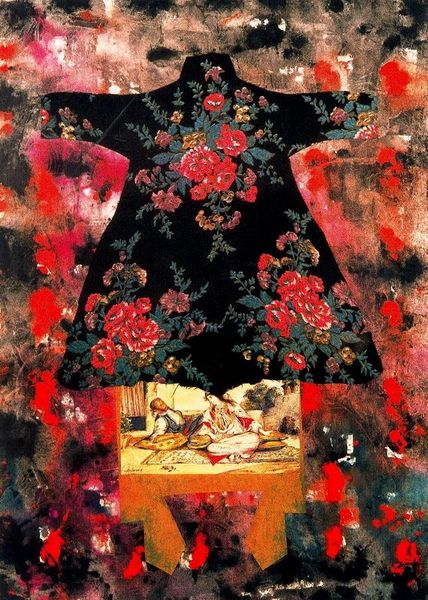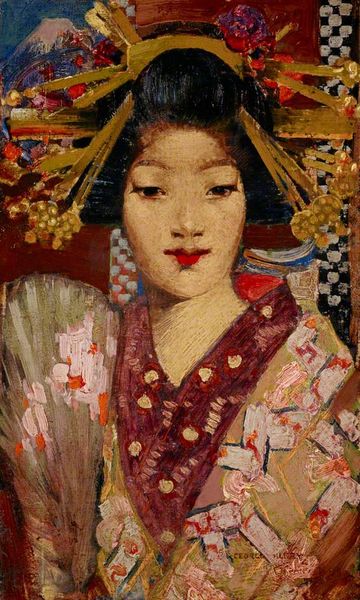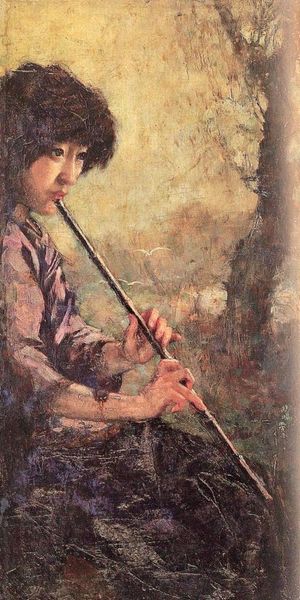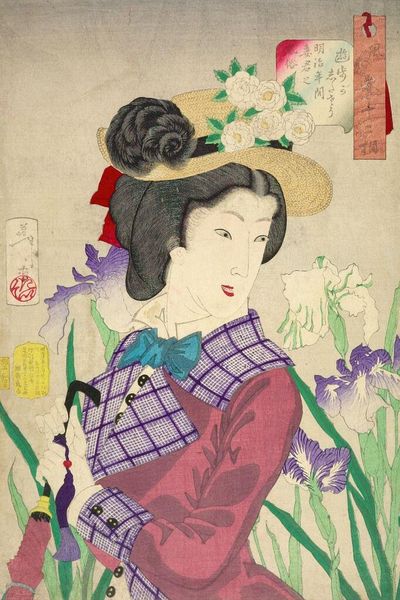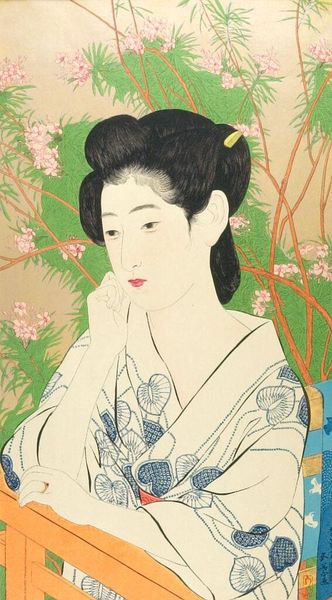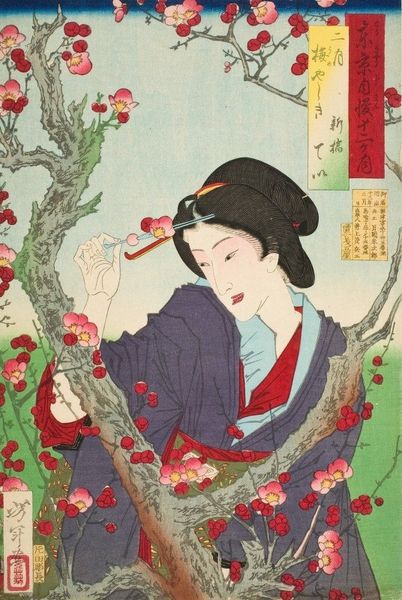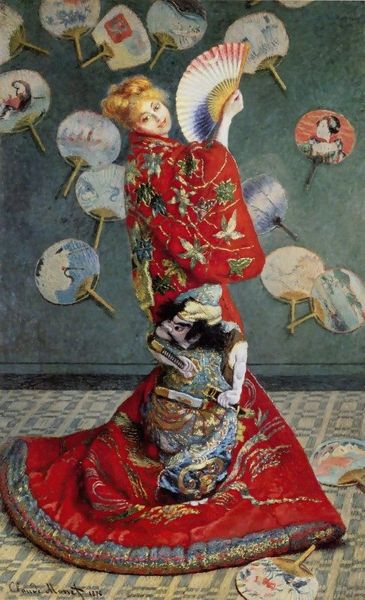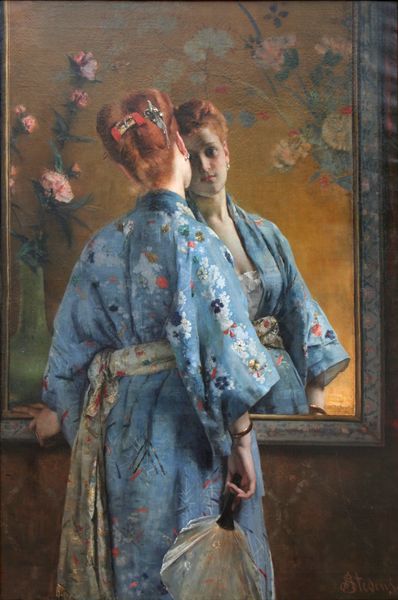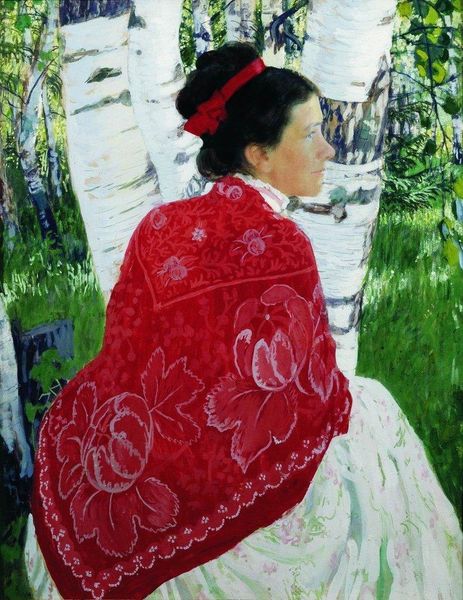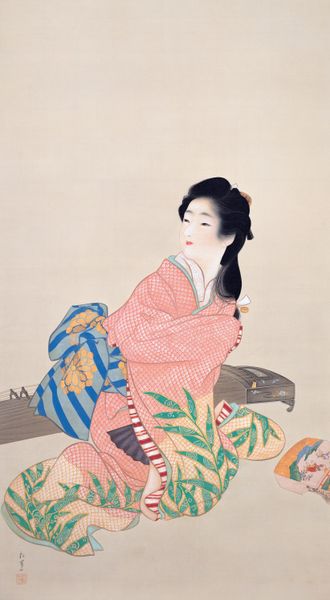
painting, oil-paint
#
portrait
#
painting
#
oil-paint
#
oil painting
#
japonisme
Copyright: Public domain
Curator: What strikes me first about this 1903 oil painting, titled "Japanese" and crafted by Vasily Vereshchagin, is the almost melancholic stillness. The woman is captured in a moment of quiet contemplation, surrounded by layered patterns and textures. Editor: The initial impression I have is one of deliberate artifice, almost theatrical. The composition feels rigidly constructed around colonial fantasies regarding women, nature, and interiority. Curator: Let’s unpack that. Vereshchagin, a Russian artist known for his war paintings, departs here into genre-painting with significant ties to Orientalism and Japonisme—styles critiqued for their exoticization of Eastern cultures. How might that influence our reading? Editor: Japonisme in painting allowed artists to re-evaluate long-standing cultural meanings regarding floral motifs. Cherry blossoms and chrysanthemums in the scene become part of the broader visual vocabulary to emphasize themes such as transience and fragility that defined contemporaneous understandings of gender. This is a painting, as is made evident by the woman’s downcast eyes, in which she has no real power or place. Curator: Right. There is a strong intersection with prevailing social attitudes that subjugated the role of women across all racial and cultural boundaries in Europe. This resonates in how the female figure here seems absorbed within this designed aesthetic world, made static. Is her apparent lack of agency rooted more in European social constructs of women, or Russian attitudes towards foreigners? Or is she granted more power through a Japanese lens? Editor: To decode the symbols of submission within the context of Japan, we can note her kimono: traditionally the outermost layer, now effectively becoming the subject's whole world. It limits, as opposed to adorns; notice the details in flowers, her own carefully crafted but static figure, echoes the floral motif in both a mirror and a restriction. It reflects back, reminding us that it imprisons even as it seems, through art, to open out beyond walls. Curator: Viewing this piece is certainly prompting me to think deeply about the many intricate layers present – from Vereshchagin's technique to the historical implications behind his choice of subject matter. Editor: It makes us reflect, critically, on what continues to be remembered, re-presented, and perpetually framed through artistic interpretation.
Comments
No comments
Be the first to comment and join the conversation on the ultimate creative platform.
